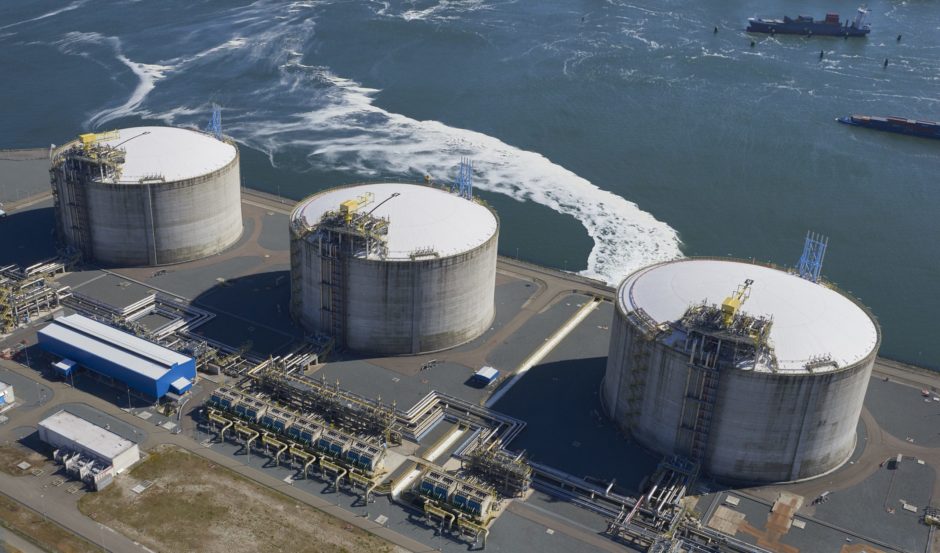
A “rewriting” of energy trade flows is now underway according to Wood Mackenzie analysts, as Europe’s move to wean itself off exports from Russia boosts investment in energy transition and LNG, but increases supply chain risks.
In a new report, analysts from the energy research consultancy said Russia’s war in Ukraine is transforming the outlook for the supply, demand and price of hydrocarbons as well as the pace and cost of the energy transition.
Based on the assumption that Europe will ban all Russian commodities by the end of 2024, the analysis considers the impact on the market over the next decade.
As upwards pressure on energy prices continues, analysts said there is “a real risk” of some global supply being lost, particularly as Europe seeks to replace Russian pipeline gas supplies with liquified natural gas (LNG).
This has in turn helped strengthen coal, meaning that further progress in energy transition could be “more expensive and potentially prove more carbon intensive”, they added.
Meanwhile, supply-chain risks are growing as inflation increases costs across the energy sector.
VP of gas and LNG research, Massimo Di-Odoardo said: “It is inconceivable that Europe will abandon its diversification strategies and return to any meaningful dependence on Russia.
“While prices will be structurally higher and a ban on Russian gas will be more challenging than that of other commodities, the ‘west’ can live without Russian commodity exports and we are already seeing a new trade balance taking shape.”
Mr Di-Odoardo said that increasing coal production in China and India would compensate for lower seaborne availability, but that the biggest risk to Russian oil production in the long term may be the loss of access to western partners and technologies.
LNG FIDs
A future ban on Russian gas would also see competition for LNG intensify as Europe battles with Asia for limited supply growth through to 2026.
Across all hydrocarbons, LNG appears to be “the most compelling investment option” over the next few years, analysts found.
“A huge increase in LNG project investment is being supported by a rapid increase in European LNG demand, with US developers already looking to fill the space,” said Di-Odoardo. “As a result, there is a potential for 50 million tonnes per annum of new US LNG capacity that will take final investment decisions over the next two years – and this could double if Europe bans imports from Russia by 2024.”
Di-Odoardo further commented: “But despite disruptions to Russian exports, global supply chains are now emerging as the biggest concern. Rising costs could delay investment in necessary energy supply and delay the pace of investment in clean energy needed to meet decarbonisation goals.”
Wood Mackenzie notes that governments of countries with both hydrocarbon and mineral resources will need a twin-track approach, in which they maximise domestic production in the short term while increasing investment in low-carbon energy supplies to meet long-term demand.
From an investor point of view, it finds that energy transition investments will be more expensive but stay competitive owing to higher commodity and power prices.
European renewables will increase rapidly, while energy security priorities will ensure returns remain attractive for both hydrocarbons and infrastructure projects.
And while LNG appears the most attractive investment option at present, even that could prove “limited” if Europe and other countries accelerate their net zero goals, analysts said.
‘Tremendous money spinners’
Meanwhile, hydrocarbons will remain “tremendous money spinners” for some time, they added.
Attractive opportunities for low-cost, low-carbon supply of oil and gas from the national oil companies (NOCs) will continue, while international oil company (IOCs) investments in traditional oil and gas projects will increasingly be displaced by commitments to low-carbon energy projects.
It comes as research from Rystad Energy suggests that total free cash flow (FCF) amongst E&Ps will balloon to $834 billion in 2022 – a 70% increase on the $493bn reported last year.
As such, metals could be the next growth areas for cash-rich IOCs, the report said.
Again however, these changes are adding pressure to already stretched supply chains, as energy and metal prices also push up the cost of new renewables capacity and electrification projects
Fears have also grown as to whether an accelerated energy transition will prove to be more carbon-intensive, though Wood Mackenzie’s analysis suggests that upward pressures on emissions will likely be offset by the slower economic growth and a renewed focus on low-carbon investments.
As a result, it expects CO2 emissions to fall by up to 15% by 2035, compared with 2021.
Recommended for you
